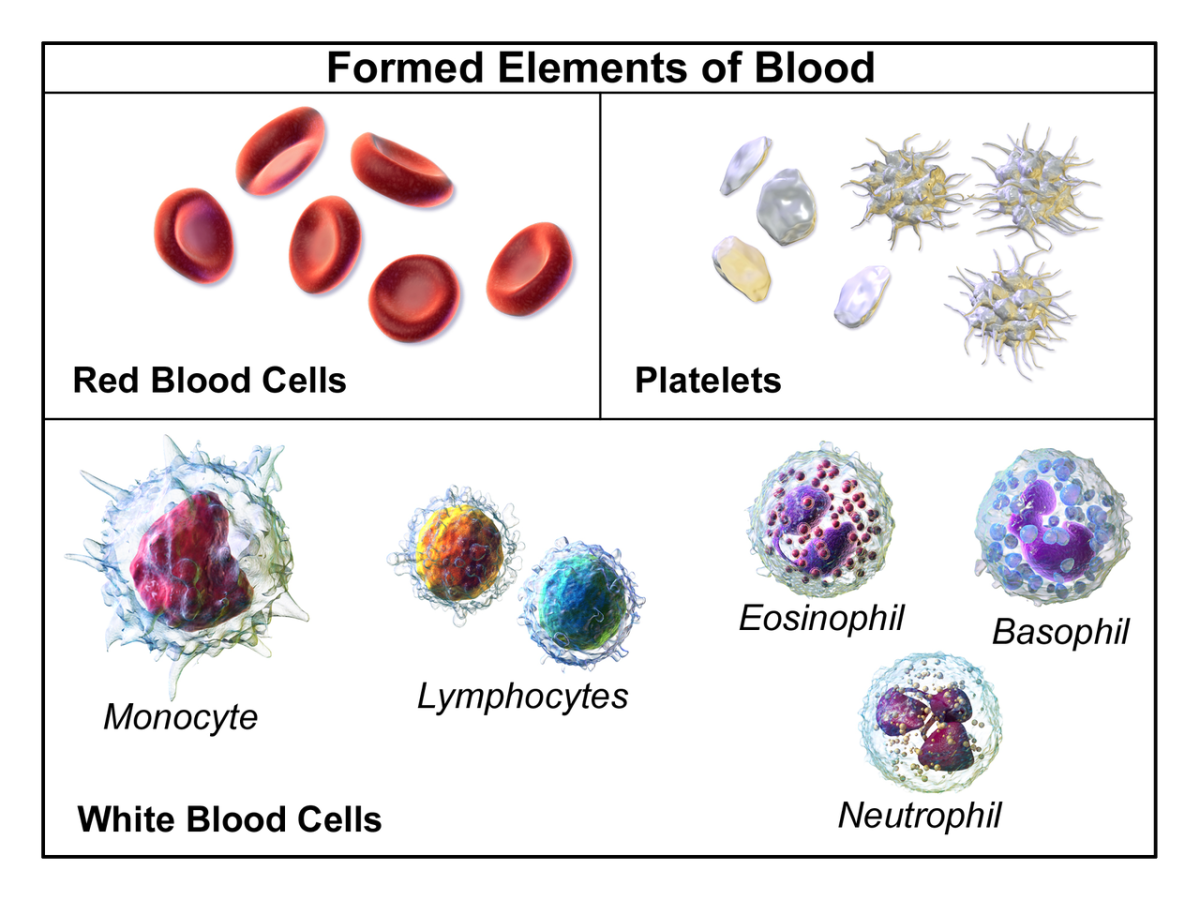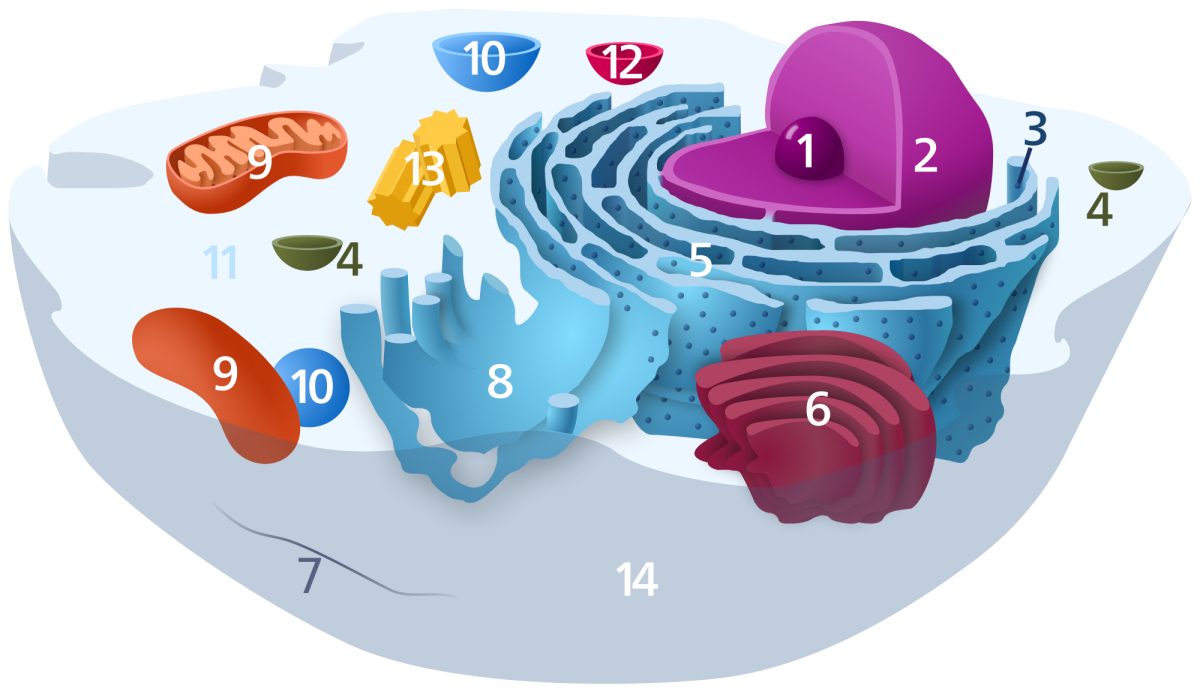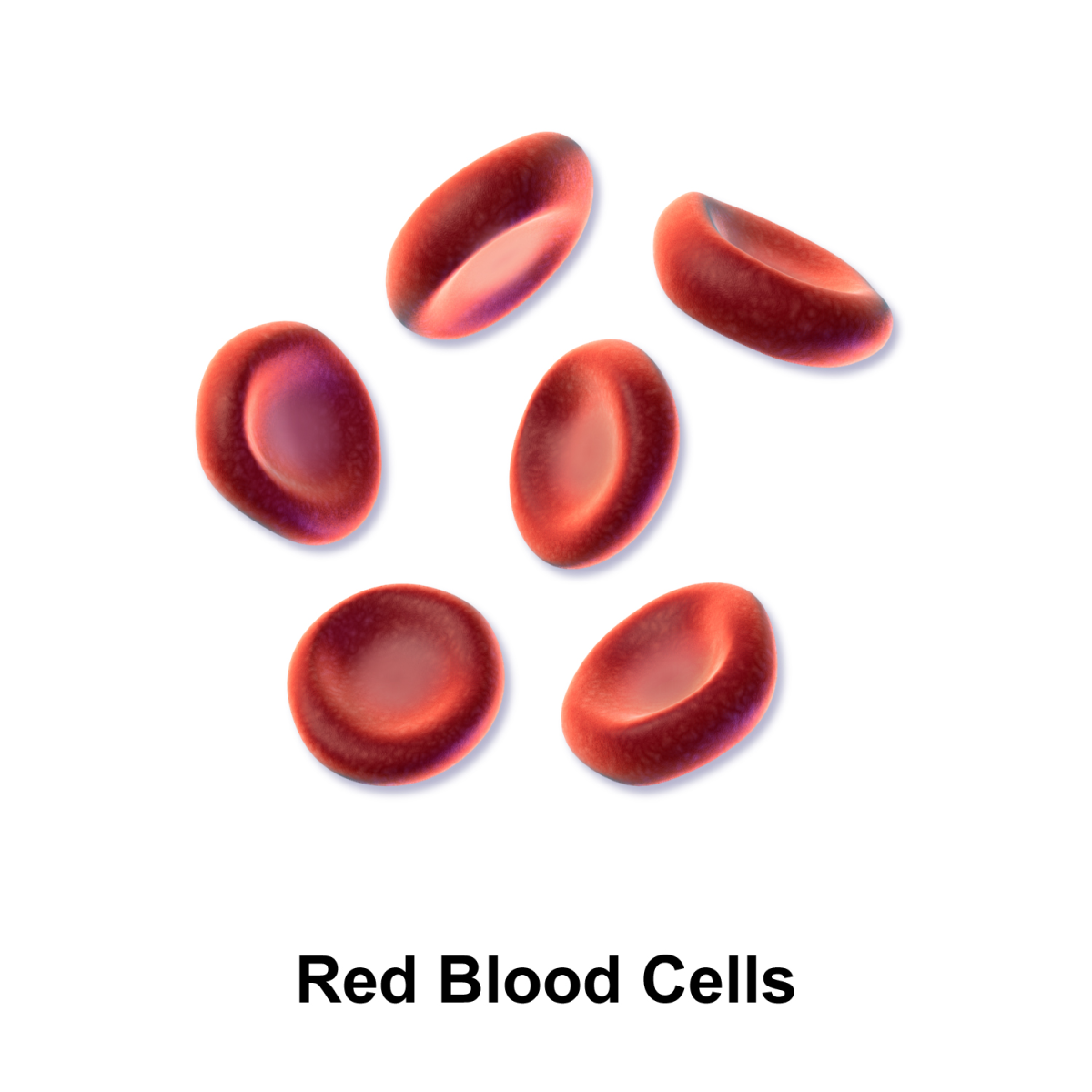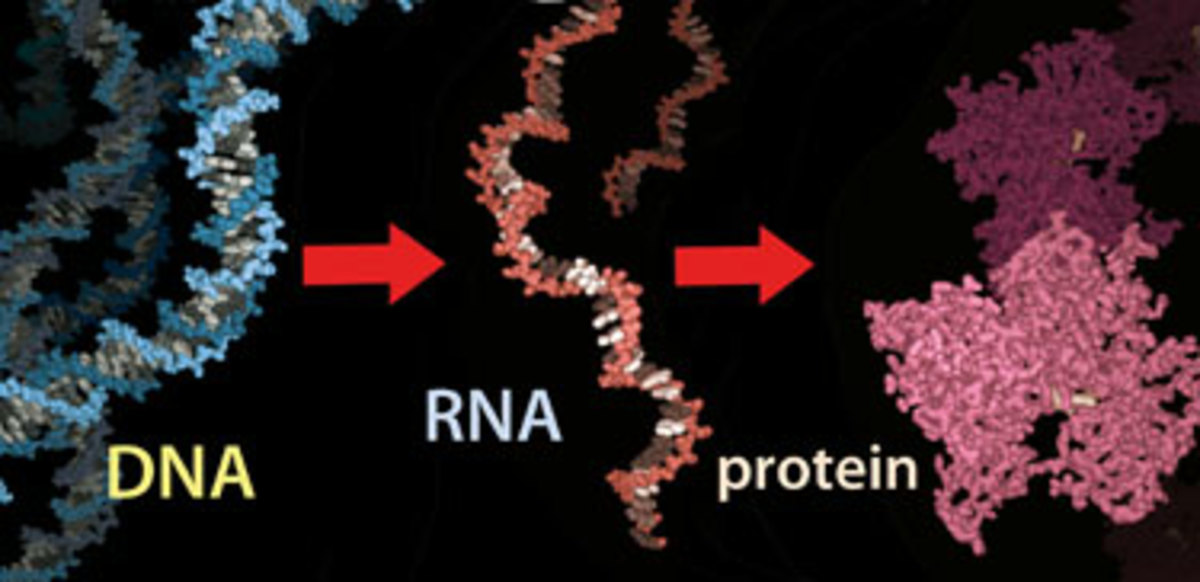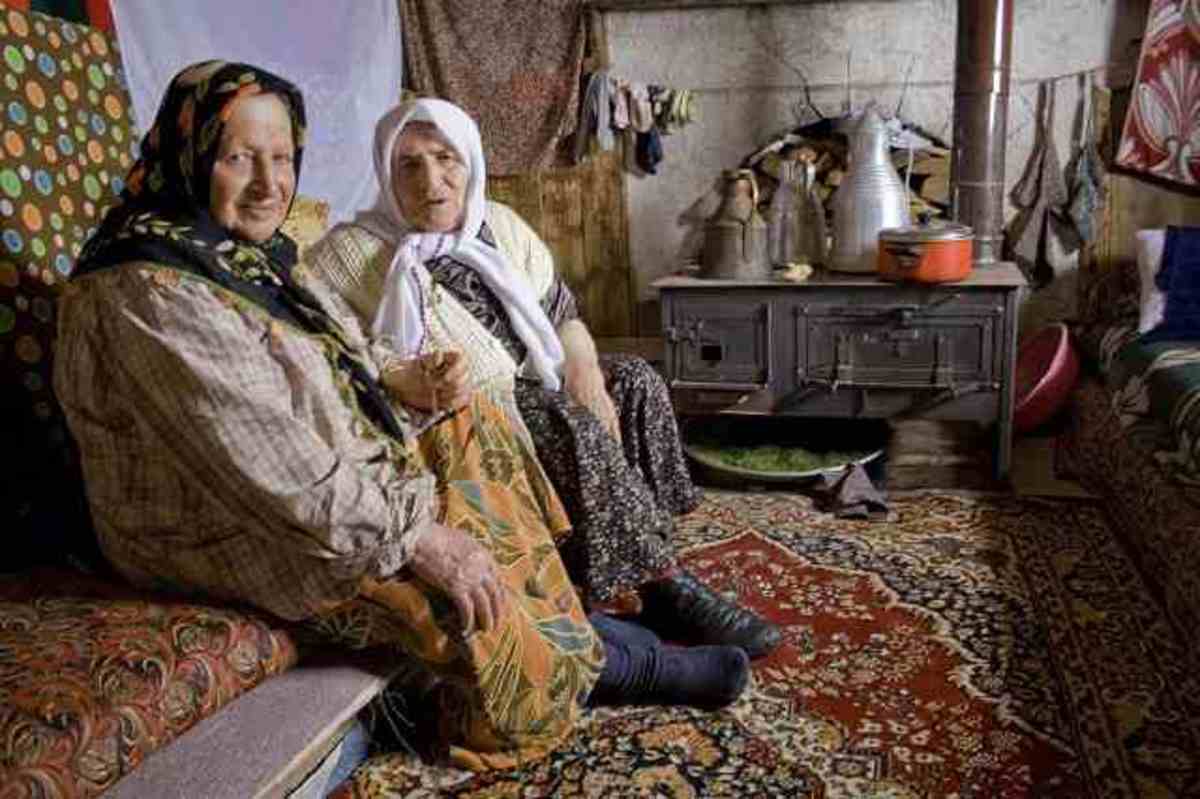Embryology of Haemopoiesis
The human bone marrow
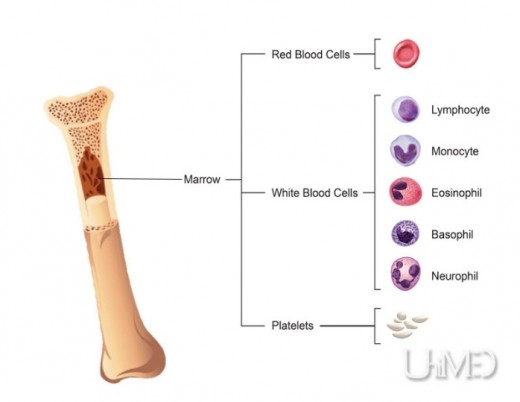
Background
All cells that circulate in blood originate from the Pluripotent stem cell also known as Haemopoietic stem cell. A small number of Haemopoietic stem cells are present in the peripheral blood on transit from one site of marrow to another, a process known as Haematogenous spread. This ensures that the bone marrow is continuously seeded with stem cells.
In the bone marrow of a healthy person, most stem cells are neither dividing nor differentiating, they are considered to be in a long intermitotic interval. They comprise reserve stem cells that can be mobilized to divide during Haemopoietic stress. Only a small population of total Haemopoietic stem cells divide, but do not differentiate. Through this mechanism, the Haemopoietic stem cell pool maintains its own numbers throughout the lifespan of an individual.
The site of Haemopoiesis varies with developmental stages as follows;
- Mesoblastic period
- Hepatic/spleen period
- Myeloid period
1.Mesoblastic period
This is the first six weeks of embryonic development. During this time, Haemopoietic stem cell tissues originate from mesochymal tissues in the yolk sac. During the first six weeks of gestation in humans, the appearance of primitive blood highlands in the yolk sac represents the earliest sign of stem cell proliferation and differentiation.
2. Hepatic/spleen period
In this period between week 7 and week 10 of embryonic development, Haemopoiesis mainly occur in the liver. This is followed by supplementary formation in the spleen from week 11 to week 15.
3.Myeloid period
From week 16 onwards to adulthood, Haemopoiesis stops in the liver and spleen,and the bone marrow becomes the primary and the only site of haemopoiesis. However, during Haemopoietic stress, e.g. in cases of bone marrow disorders,Haemophilias,complications during surgical procedures or cancer, the liver and the spleen may revert to their foetal roles of blood production.
Pathological blood formation outside the bone marrow is referred to as extra medullary Haemopoiesis.
In children, haemopoiesis mostly takes place in the marrow of the long bones e.g. tibia and femur while in adults it takes place in the vertebrae, cranium, sternum and pelvis.
Micro-environment of the bone marrow
The Pluripotent stem cell (PSC) or Haemopoietic stem cell (HSC), mainly resides in the bone marrow and therefore for it to carry its function more effectively, it poses some unique characteristics which includes;
- Its cells have an extensive self renewing capacity
- Its cells are pluripotent,meaning that they have the potential to give rise to multiple cell types of all blood lineages
- Has sinusoidal capillaries that forms a continuous layer
- Has a specialized form of connective tissue
The Haemopoietic inductive microenvironment is essential for effective Haemopoiesis.The number of cells within the stroma of the bone marrow such as fibroblasts, macrophages, endothelial cells etc is very important.
The marrow provides a very important sorting mechanism that permits only the most mature cells to exit the marrow. Only a certain minimum size of blood cells is able to penetrate the endothelium of the bone marrow. Cells that are nucleated cannot exit the bone marrow unless their nucleus is distensible.
The bone marrow microenvironment also serves as a reservoir for mature neutrophils which are only released when a bacterial infection occurs.
Normal Haematopoiesis requires collaboration between ;
- Haemopoietic stem cell (HSC),
- Cytokines and,
- Bone marrow microenvironment.
When any of them fails, the result is aplastic anaemia.
The development and differentiation of Haemopoietic stem cells from the bone marrow follows several developmental pathways which ultimately give rise to the diversity of cells that circulate in the peripheral blood.
The first step of Haemopoietic differentiation involves the commitment of the stem cells to either;
- Myeloid pathway, or;
- Lymphoid pathway
The progeny of cells of either pathway becomes obligated to develop into a specific line.
The myeloid pathway
This pathway gives rise to;
i. Erythrocytes
ii. Megakaryocytes
iii. Phagocytic cells
Myeloid stem cells develop and mature within the bone marrow before being released into circulation.They include; Red Blood Cells, Monocytes, Neutrophils, Eosinophils and Basophils.
The lymphoid pathway
This pathway leads to;
i. B cell pathway
ii. T cell pathway
iii. Null pathway
B-Cell pathway differentiates into plasma pathway which secretes;
- Immunoglobulins
- Memory B-Cells for long lived immunity for defense against re-infection.
T-Cell pathway differentiates into different subsets that play a critical role in cell mediated immunity,e.g;
- T helper 1 cells
- T helper 2 cells
The Null pathway is quit haematogenous. It contains;
- Highly cytotoxic NK Cells
- A variety of immature lymphoid cells
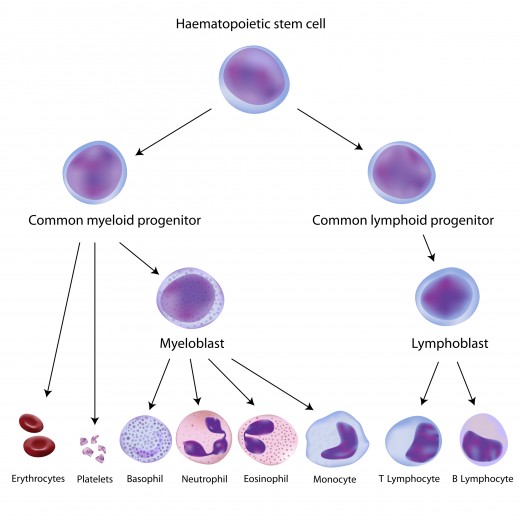
© 2017 Martin

